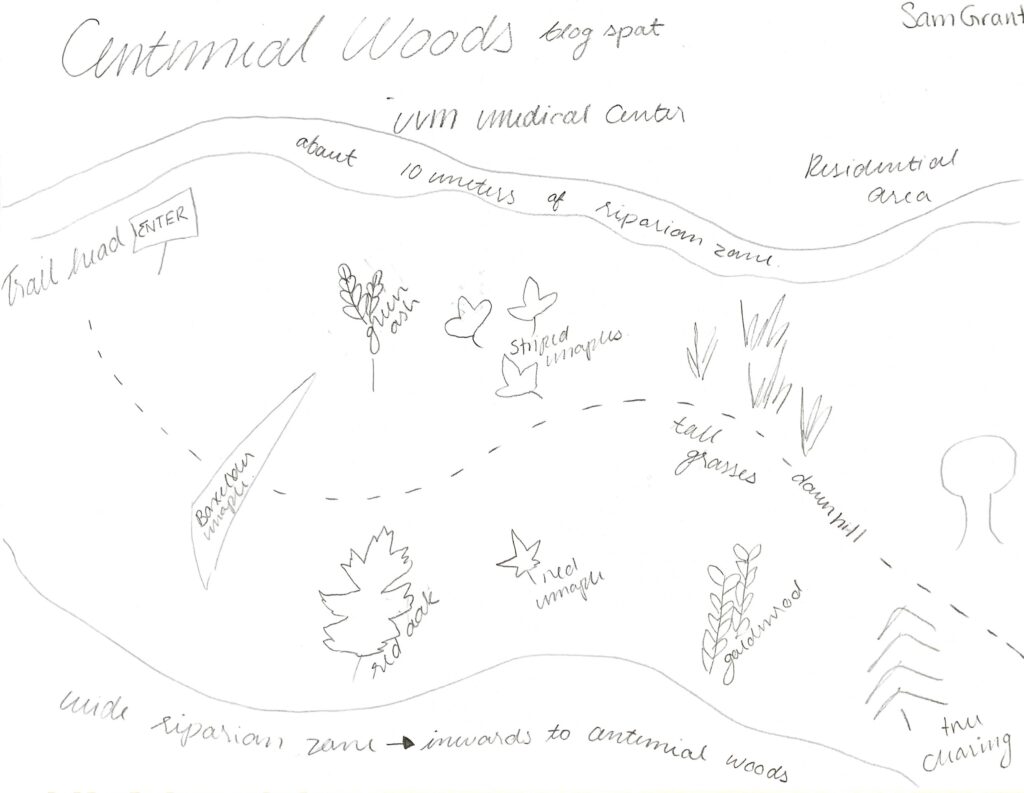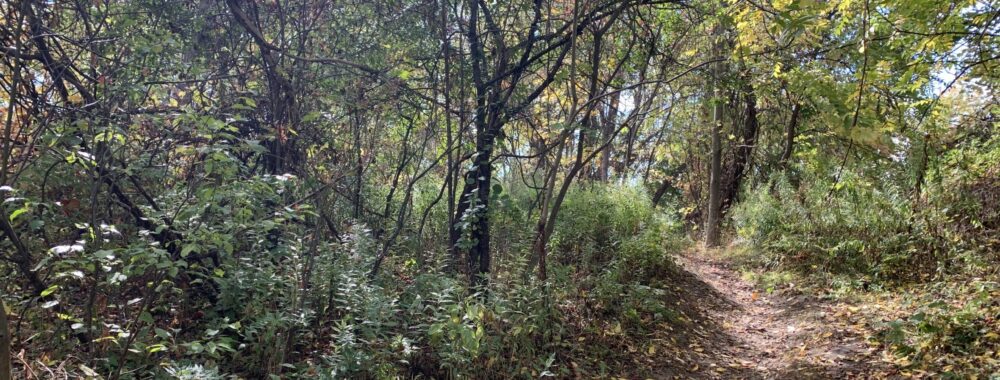Hello again Centennial Woods enthusiasts! Welcome back to my blog about the phenological changes in Centennial Woods. For reference I have created a birds eye view map of the place we are exploring.

Since our last visit, more and more leaves are starting to fill up the trail, and the air has become colder. Due to recent rains the grounds here are soggy this week, and the leaves are becoming embedded in the wet mud. The colors are at its peak right now, with there being less green then I observed last visit. Another fun thing I noticed was that I heard less chirps from birds than I heard in my last visit. Though the weather is still warm enough for the birds to stay, perhaps they are starting to migrate.
During this visit I attempted to look for indicators of wildlife. Other then the birds I discussed earlier, which was an audible indicator, I noticed some visual indicators as well. Though I didn’t see a squirrel, which is a common animal here, I noticed some acorns from the Red Oak tree. Acorns are a common food eaten by squirrels, and therefore shows that there will likely be squirrels here soon, who are collecting food for the approaching winter. Another indicator I noticed was that since the ground is muddy, you could identify some tracks. I saw two types of tracks: squirrel or chipmunk tracks, and human shoe tracks. This shows that there have been animals and people that have passed through recently given the rain from yesterday (Tuesday October 20th), which is what made the ground softer.
